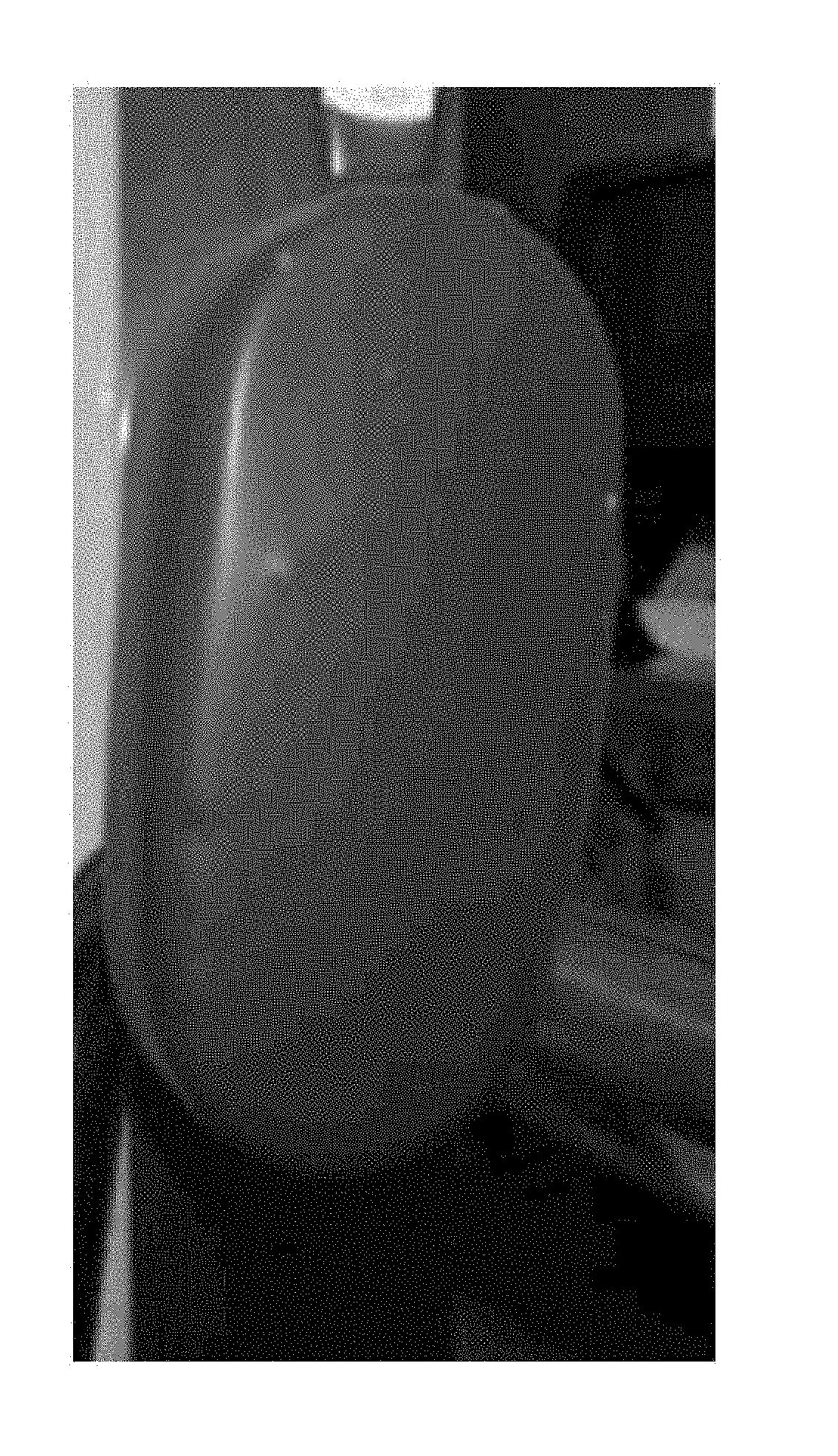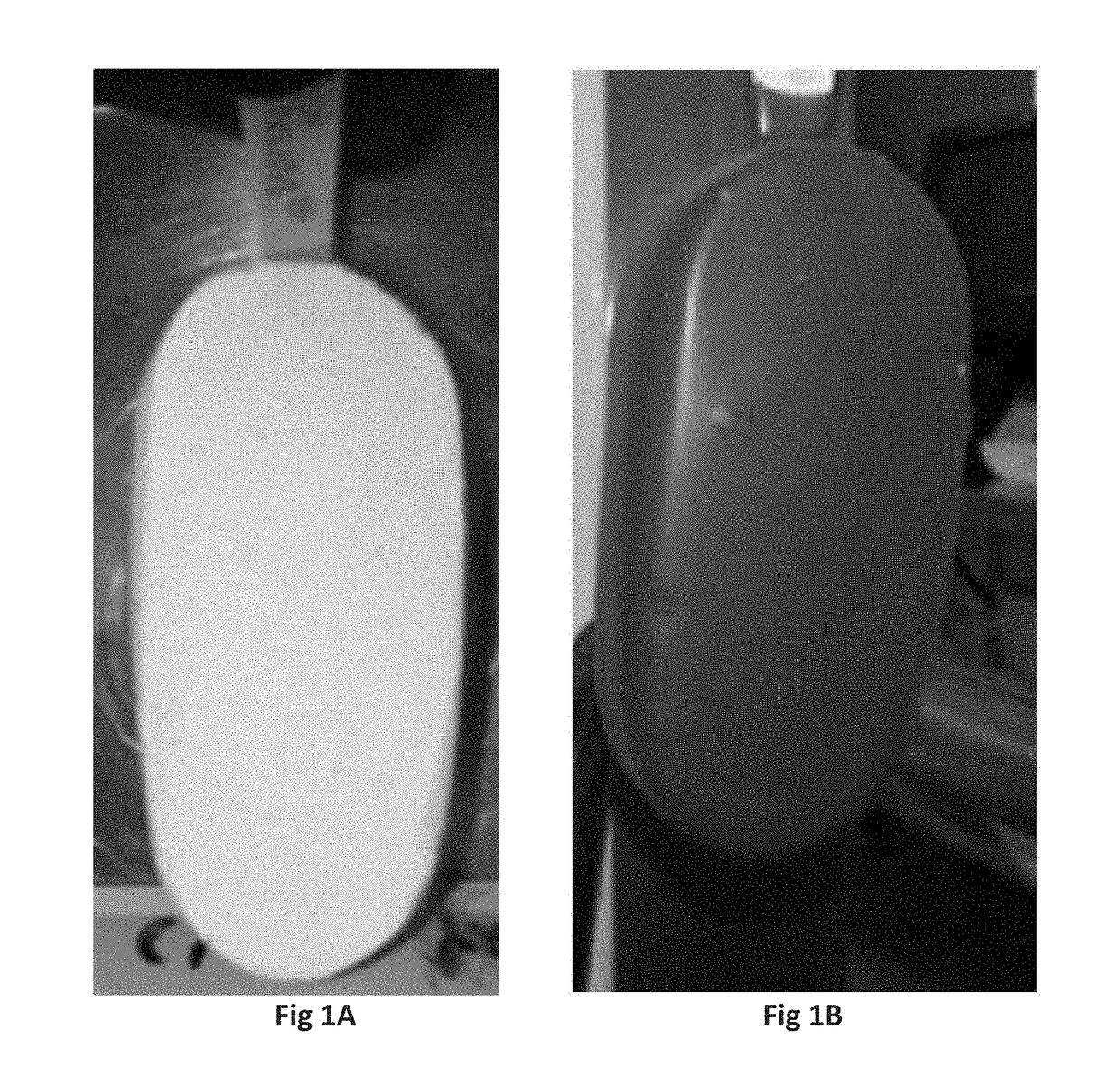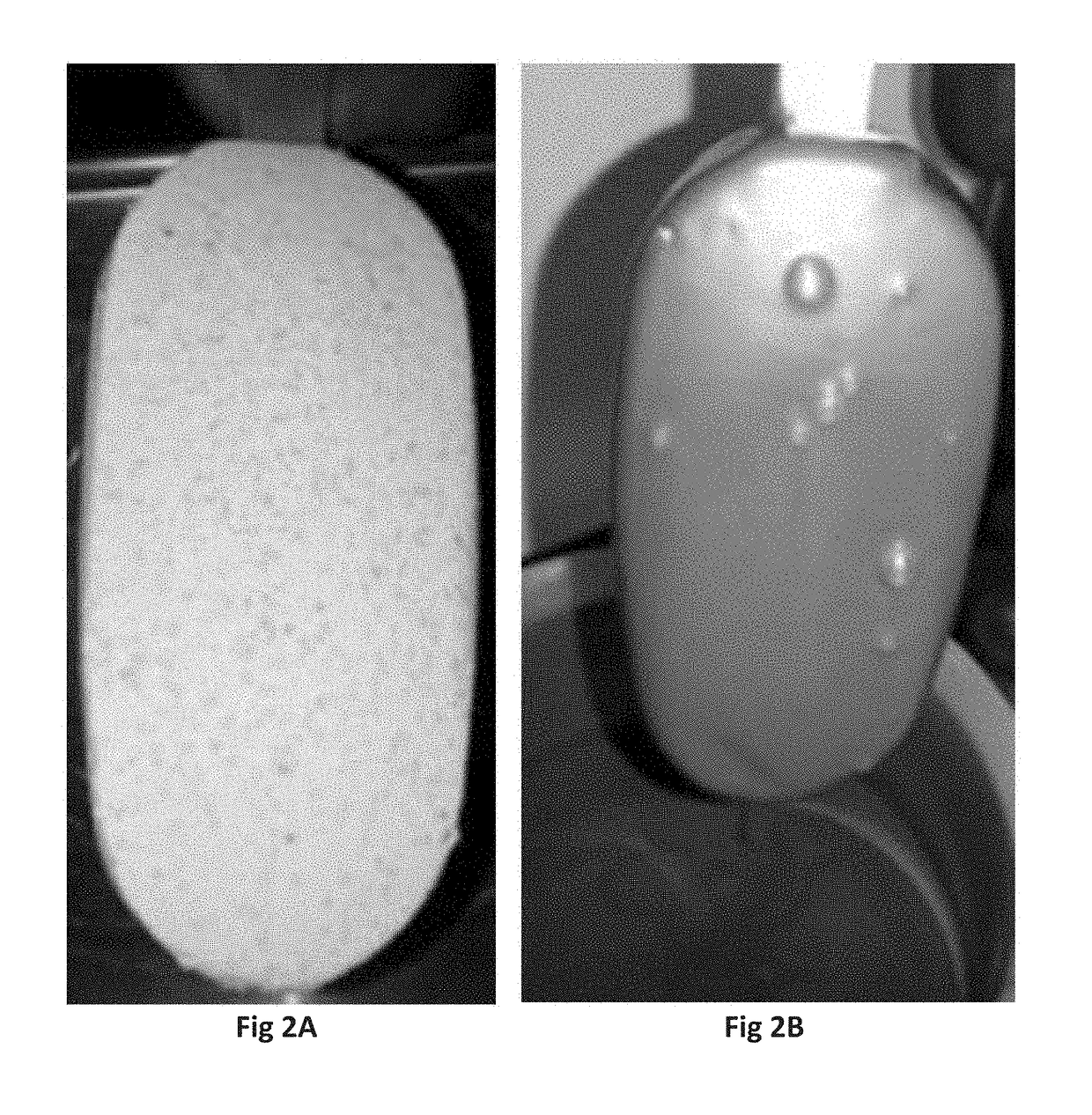Process for manufacture of coated frozen confection
a technology which is applied in the field of coating and frozen confections manufacturing, can solve the problems of undesirable surface imperfections and unwanted bubbles in liquid coatings, and achieve the effects of reducing ice and lactose crystal growth, uniform product, and reducing melting
- Summary
- Abstract
- Description
- Claims
- Application Information
AI Technical Summary
Benefits of technology
Problems solved by technology
Method used
Image
Examples
example 1
Radiative Heat
[0066]Smooth Surface
[0067]An ice cream of a conventional formula was carefully produced by extrusion in known manner and cut into frozen confection portions of such a size and dimension as a commercially available consumer ice cream product. An image of the produced ice cream is shown in FIG. 1A.
[0068]The produced ice cream had an essentially smooth surface with no observable troughs in the surface. The ice cream was then subsequently dipped into a molten chocolate coating at 46° C. and removed to allow the coating to crystallise as its heat was drawn into the body of the frozen ice cream.
[0069]An image of the coated ice cream is shown in FIG. 1B. The resulting coated ice cream produced a largely smooth chocolate surface. However, even when the production of the ice cream core is carefully controlled, bubbles may still form as evidenced by FIG. 1B in which a bubble has formed and caused an imperfection on the coating as can be observed on upper part of the product on t...
example 2
Conductive Heat
[0082]Thermally Treated Surface—Conductive Heat
[0083]To introduce the effect of roughness to the surface in a controlled and repeatable manner, approximately 700 holes were again introduced into the surface of a frozen confectionery each with a diameter of about 0.3 mm and depths of up to 5.5 mm, by applying a wire brush to the surface of the ice cream.
[0084]The surface that was roughened was then heat treated by contacting it with a stainless steel block at 20° C. which was held on the product surface for 5 seconds to give a thermal transfer of 52.5 J / cm2. An image of the thermally treated ice cream is shown in FIG. 4A.
[0085]The thermally treated ice cream was then dipped in liquid nitrogen and left to warm at room temperature.
[0086]The ice cream was then dipped into a chocolate coating at 46° C. and withdrawn, allowing the chocolate coating to crystallise as its heat was drawn into the body of the frozen ice cream. No bubbles could be seen to form in the liquid choc...
example 3
Generation of Bubbles
[0088]In order to more accurately understand the nature of the troughs which give rise to the formation of bubbles, experiments were carried out. This involved intentionally inducing troughs (referred to as “recesses”) of various dimensions to understand the conditions under which bubbles are formed.
[0089]Stick-based ice cream blanks (i.e. uncoated frozen confections) were provided. They were removed from a freezer at a temperature of −25° C. and punching tools such as pins or nails were used to created cylindrical recesses of varying widths (Diameters of 0.6, 1, 2, 3.7, 5, 6.8, 8.3, and 12.8 mm) and of varying depths (Depths of 1, 2, 3, 4, 5, 10, 15 mm). Volumes of the recesses in mm3 were calculated using the formula: Pi×(radius)2×(height) and are shown in Table 1. For each volume, recesses were created in triplicate.
TABLE 1Volumes of recesses for a given depth and diameter.Diameter of recess (mm)0.6123.756.88.312.8Depth of10.280.793.1410.75No recesses with th...
PUM
 Login to View More
Login to View More Abstract
Description
Claims
Application Information
 Login to View More
Login to View More - R&D
- Intellectual Property
- Life Sciences
- Materials
- Tech Scout
- Unparalleled Data Quality
- Higher Quality Content
- 60% Fewer Hallucinations
Browse by: Latest US Patents, China's latest patents, Technical Efficacy Thesaurus, Application Domain, Technology Topic, Popular Technical Reports.
© 2025 PatSnap. All rights reserved.Legal|Privacy policy|Modern Slavery Act Transparency Statement|Sitemap|About US| Contact US: help@patsnap.com



